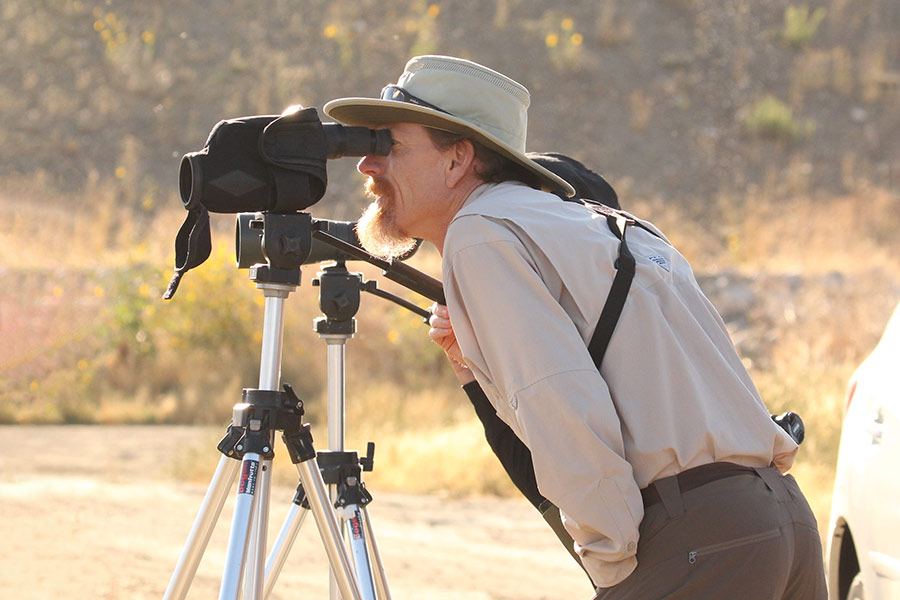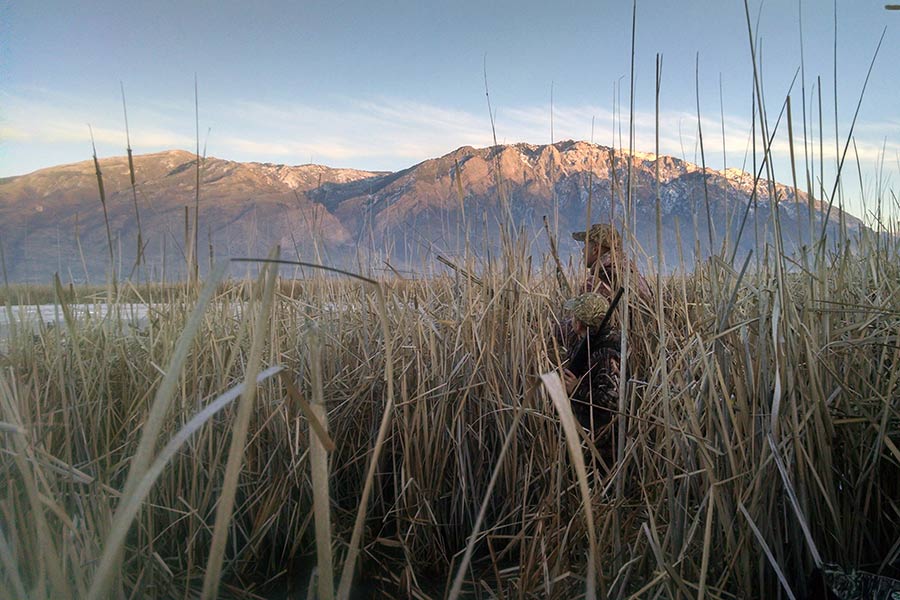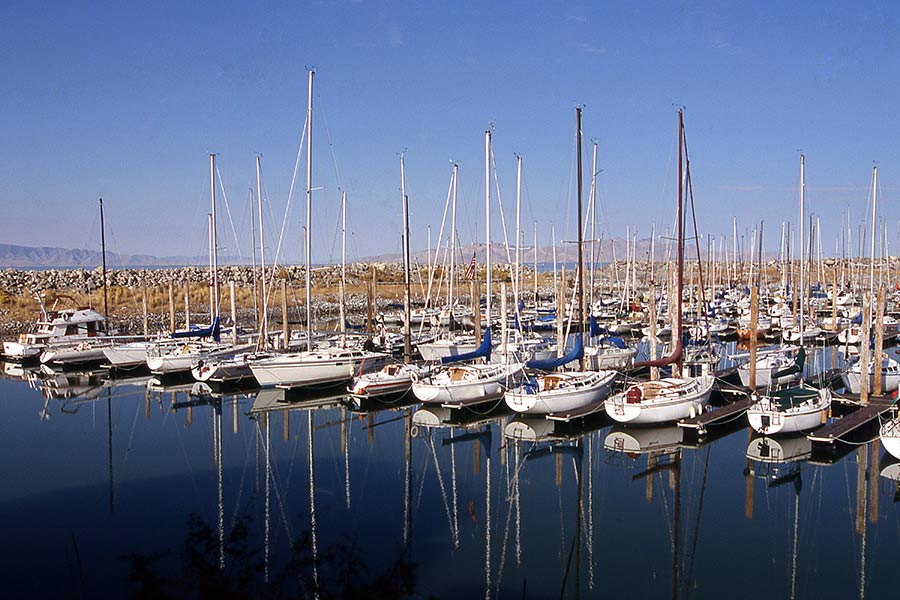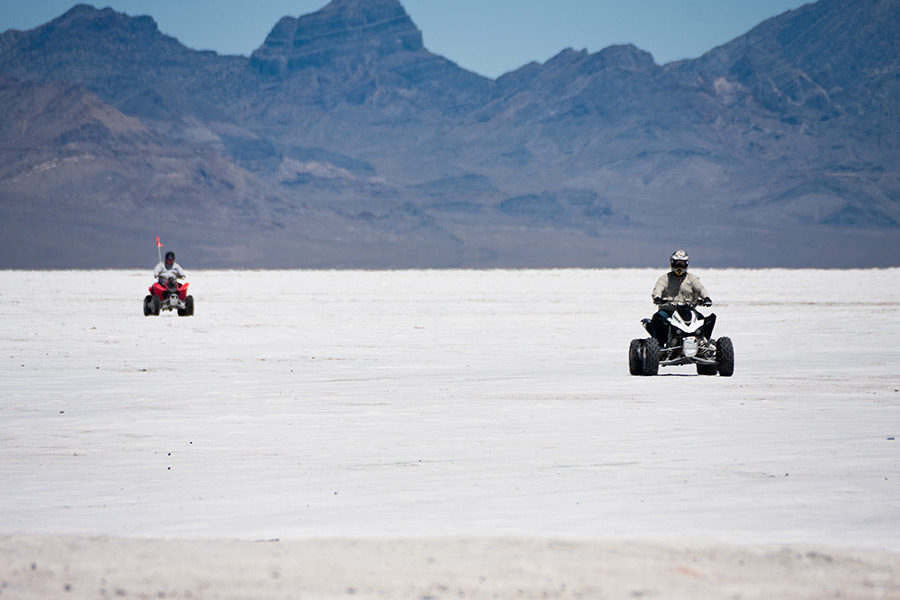≡
Recreation
Various recreational activities are available at the Great Salt Lake and on its various islands:
Birding and wildlife watching
Over 10 million birds, consisting of 338 species, fly over the Great Salt Lake, making it an avian oasis and a birdwatcher's paradise. Are you interested in 'birding?' Visit any of the nine Waterfowl Management Areas, the George S. and Dolores Doré Eccles Wildlife Education Center or the Bear River Migratory Bird Refuge.
In addition, outdoor enthusiasts can enjoy watching a wide variety of other wildlife around the lake. Big game animals, such as bison, pronghorn antelope and mule deer, freely roam Antelope Island. Antelope Island also offers hiking, mountain biking, horseback riding and camping.
Hunting/Fishing
Each fall, duck and goose hunting are allowed, with permits, at all Waterfowl Management Areas, private duck clubs and at portions of the Bear River Migratory Bird Refuge. Learn more about hunting opportunities in Utah.
Fishing is another popular activity that can be enjoyed — year-round, in fact — in areas around the Great Salt Lake. Not only is fishing one of the most relaxing outdoor hobbies, it can be one of the most rewarding as well. Learn more about locations, rules and regulations for fishing in Utah.
Swimming
Swimming in the Great Salt Lake has long been popular because of the water's well-known buoyancy — due to its high salt content — as well as other supposed curative aspects. Pioneer leader Brigham Young led the first organized bathing excursion to the lake on July 4, 1851.
Many people throughout history have reported that swimming in the lake is refreshing, invigorating, healthy and relaxing. Since permanent settlers arrived in the Salt Lake Valley, numerous resorts have sprung up around the lake, offering amenities such as bathing facilities, concert halls, dancing, seasonal cottages, bike trails, boats, bowling, shooting areas and even orchestras! In the late 1800s and early 1900s, passenger trains maintained regular routes to the resorts from Ogden and Salt Lake City.
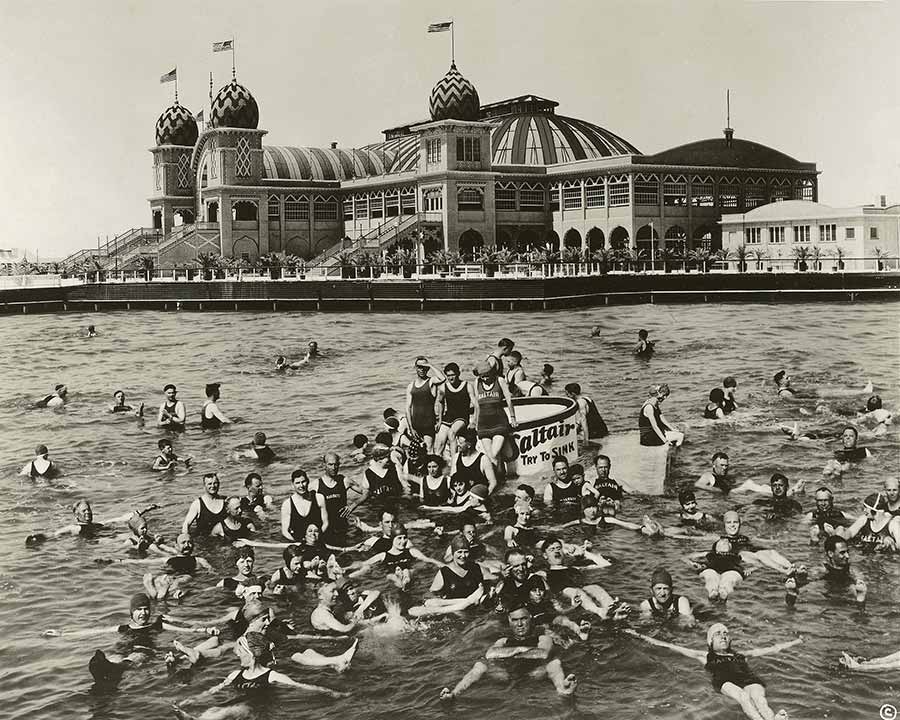
Swimmers at Saltair, circa mid-1890s.
Photo courtesy L. Tom Perry Special Collections, Harold B. Lee Library, Brigham Young University.Saltair, which opened in 1893, was by far the most successful resort and the only major resort to still exist today. Built as a family-friendly, "Coney Island" of the West, Saltair boasted a better location and provided first-class facilities — complete with electric lights. Despite the lake's receding water levels in the 1890s, Saltair easily drove the other resorts out of business.
Saltair lost its appeal over time, however, and its pavilion and other facilities fell into disrepair. Numerous fires and floods wracked the buildings in the 1900s, and by the 1960s, low water levels had made swimming in the lake less popular. Several attempts were made to revive the resort — the latest in 1981, when the pavilion was relocated a mile from its original location. Since then, Saltair has been regaining its prominence, and conferences and concerts are now held there regularly.
Sailing/Boating
Sailing is yet another popular activity on the lake; some sailors have even called the lake a "boating jewel," while others relish in the relative isolation compared to other lakes. Visit the Great Salt Lake Yacht Club's website for more information.
Motor boating is less popular, as the lakewater is very salty and dense. Small waves jar even large boats, and the engine and boat must be thoroughly rinsed afterward in order to avoid corrosion. Paddleboarding and rowing, on the other hand, are more feasible and are gaining in popularity.
Racing
For decades, the Bonneville Salt Flats, located west of the lake, have been used for motor racing and setting land speed records. The salt flats have also become a popular tourist attraction in their own right.
In 1992 and 1993, massive flooding, combined with brine withdrawal for potash production, considerably lowered the ideal level of salt crust for car racing. Consequently, serious and large-scale efforts were undertaken to fix this problem and replenish the salt flats with fresh salt. Ultimately, the U.S. Bureau of Land Management added around 1.5 billion tons of salt to the area.


